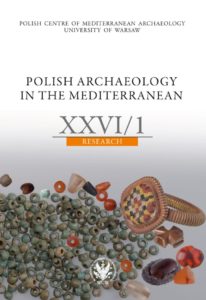Royal ornaments of a late antique African kingdom, Early Makuria, Nubia (AD 450–550). Early Makuria Research Project
Royal ornaments of a late antique African kingdom, Early Makuria, Nubia (AD 450–550). Early Makuria Research Project
Author(s): Joanna Then-ObłuskaSubject(s): Christian Theology and Religion, Archaeology, Visual Arts, Ancient World, International relations/trade
Published by: Wydawnictwa Uniwersytetu Warszawskiego
Keywords: Beads; pendants; jewelry; cabochons in silver settings; ivory containers; intarsia; ivory gaming pieces; Nubia; AD 450–550; late antiquity; Early Makuria; Indo-Pacific trade; Christian symbols;
Summary/Abstract: After the fall of the Meroe kingdom, three entities – Nobadia, Early Makuria, and Alwa (Alodia) – emerged in northeast Africa between the 4th and the 6th centuries AD. Richly furnished elite cemeteries with tombs of the Nobadian kings are known from Qustul and Ballaña in Lower Nubia (Emery and Kirwan 1938), but until now no royal tombs of Early Makuria have been identified. A comparative analysis of some recently excavated adornments and ornaments from the tumulus cemetery of el-Zuma in Upper Nubia have now enabled the Early Makuria royal tombs (AD 450–550) to be placed there. The assemblages from three large tumuli are dominated by personal adornments (beads, pendants, earrings, chains, crosses, and a ring), royal regalia (cabochons and settings), and other decorated items (metal sheets, an intarsia and ivory gaming pieces). Apart from beads of various materials, like marine mollusk shell, ostrich eggshell, faience and stone, which were made probably in local workshops, the remaining items were imports from the Mediterranean and Sri Lanka/South India (glass beads in the latter case). Moreover, many of the decorated objects and the techniques used to make them find parallels in the elite Nobadian cemeteries of Qustul and Ballaña, hinting at the royal origin of some of the Early Makuria tomb owners at el-Zuma. These parallels induce the thought that there was a single workshop in late antique Nubia producing artifacts for the elite.
Journal: Polish Archaeology in the Mediterranean
- Issue Year: 1/2017
- Issue No: XXVI
- Page Range: 687-718
- Page Count: 32
- Language: English

